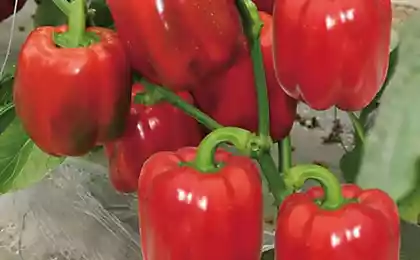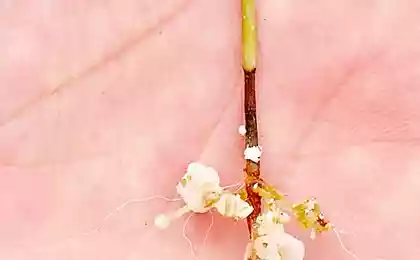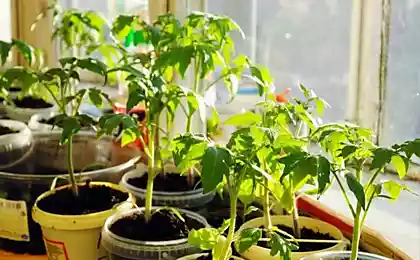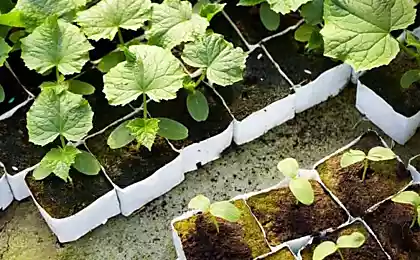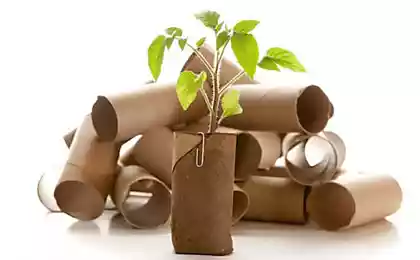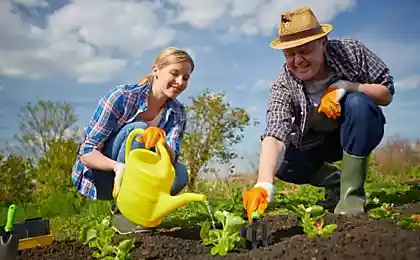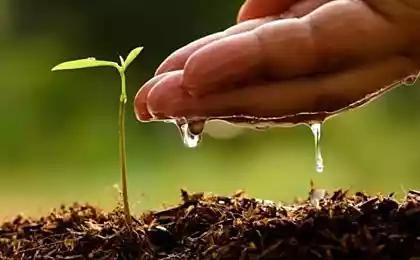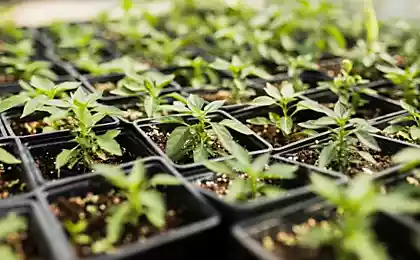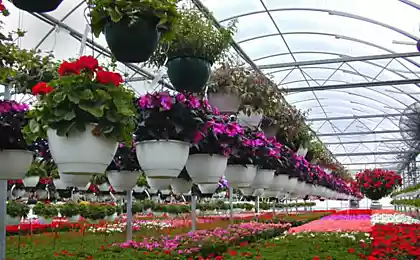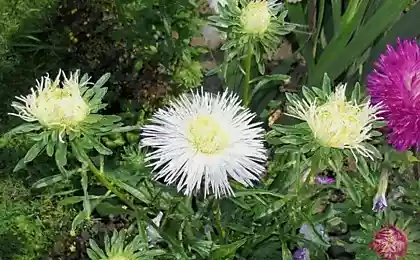536
All You need to know about swordplay seedlings

Swordplay seedlings is one of the controversial issues, and discussions around it, probably never will be completed. Why? Yes, because both supporters and opponents of the procedure are based not only on theoretical knowledge but also on their own practical experience. And what about those who make their first steps in gardening and horticulture?
Let's try to evaluate the advantages and disadvantages of the method, and look at it from different angles — perhaps then it will be easier to decide, you need to pick your plants or not it is better to do.
What is swordplay seedlings? This term comes from the French word piquet, meaning "stake, peg". As a rule, they represent the transplantation of young plants (seedlings) of the total capacity in individual pots. Sometimes sparring is also called topping taproot when transplanting — do it to force the root system to branch.

Thus, the reason for the doubt becomes clear from the definition: swordplay — traumatic procedure, the intervention in the processes of growth and development of seedlings. Of course, this raises many questions that we will try to find the answer.
What is the purpose of the dive? The main goal is culling the weak and diseased plants, selection of the strongest for further cultivation. It is clear that we must have sufficient quantity of seed — or what to choose? When seed a little, or talking about any valuable, rare culture (the variety), gardeners often choose suspiciously method of growing seedlings to the random error did not lead to the loss of precious seedlings.
Are all cultures you can dive? Most plants (vegetable and ornamental), properly executed the pick tolerate well. But there are cultures that it is desirable not to disturb their root system is sensitive to any intervention, and even if the seedling does not die after the procedure, he was noticeably lag behind their counterparts in development.
Such "girls" are, for example, cucumbers, zucchini, pumpkins — they are best sown immediately in a permanent place or, in extreme cases, grow in peat pots, which then "relocated" into the ground. While these plants are dives.

But the beloved summer tomatoes, on the contrary, when properly performed, picking noticeably grows stronger, building up the root system and form a strong, well-developed shrubs. In the following short video very clearly shows the differences in development of tomatoes grown with the pick and without it:
Conflicting opinions about the dive eggplant and pepper. Some say that they can not be thinned because the plants are then hurt for a long time, others argue that the procedure and these cultures, only good. In my experience I can say that pepper carries great picks — cases plant death or disease after transplantation are rare. Thus, contrary to recommendations, I bury the seedlings at swordplay and conduct the procedure very early, instead of waiting as all the sources suggest, the appearance of the first true leaves.
But what this says about Sergey Dubinin, the founder and the General Director of Agrofirm "Sedek":
Turns out, it is possible to dive almost all cultures, if you do it correctly and on time.
At what age should dive seedlings? The pick is preferably carried out when the plant has formed 1-3 true leaves (they need to be distinguished from cotyledon that appear immediately, but only sprout will hatch from the soil). This usually occurs 2-3 weeks after emergence. To dive earlier, but later is undesirable. The older the seedling becomes, the harder it is to tolerate the procedure.

Here it is worth considering one more thing: when the plants are planted in total capacity, and free space between them for a while, growing up, they begin to interfere with each other. The seedlings are pulled, the stems become thin, the roots under the ground are intertwined, and without injuries, the transplant will be very difficult. So the sooner we spend the pick, the easier the seedlings take root in a new place.
Do I need to bury the seedlings at swordplay? To get a more sturdy and stocky plants, when swordplay seedlings submerged almost to the cotyledons.

With the exception of pepper. It is believed that he is sensitive to the penetration; in addition, adventitious roots, this culture does not form, the seedlings even in cramped quarters is not particularly stretched — need to bury them, like, not.
Important to pick plants that are sown surface (petunias, Lobelia, etc.). If you decide to grow these crops without picks, the soil for planting put in a container so that later you can add the ground, buried the seedlings bedding.
The whole process of picking the very details described in the following video:
What are the benefits dive? To summarize: what are the arguments in favor of picking seedlings?
1. This method allows you to select the most strong and viable plants, which in future will give a good harvest or please abundant, beautiful blooms.
2. Swordplay helps to save space: at the initial stage the seedlings can fit in one small container. When especialice the method of growing seedlings we will have to use a sparse sowing or thin out seedlings.

3. Topping the main root stimulates the formation of an extensive root system that will help the plant get more food in the future.
4. Plant after the pick gets an extra eating area. If you use the suitable size of planting capacity and high-quality soil, it becomes a good stimulus to the development of seedlings.
5. Some crops (e.g., tomatoes) pick is necessary: it helps to form a strong, healthy and stocky seedlings.
As the dive may harm the plants? And what are the reasons encouraging gardeners to refrain from picking? Most of all — their own negative experiences or fears. Indeed, a bad procedure can destroy plants. Let's see what serious errors can lead to similar consequences.

1. Forget to prepare plants for the procedure. The main thing is abundantly moisten the soil to as little as possible to injure the roots. Pulling out the seedlings from dense, dry soil, we are more likely to abuse them.
2. You tuck your roots when planting. If the root of the plant is too long, better pinched it, stimulating the formation of additional lateral roots than the "pack" in the planting hole, turning or bending. Incorrect location of the root will cause problems in the growth and development of seedling.
3. Forget about care after the transplant. In the first 2-3 days after the procedure polerowanie seedlings need special care. They need to cover up from the sun, proper watering (rare, but abundant). Sometimes recommend the use of stimulants rooting so that plants quickly take root.
4. Dive weak, damaged, diseased, deformed plants. High probability that a change they will not survive. Such seedlings, it is desirable to discard; if the number of seeds is too small, it is better to prefer especially method of growing seedlings.

In addition, the dive is a time — consuming process, requiring patience and accuracy. Of course, the temptation to save your own time by sowing the plants at once in individual cups or other containers.
Which is correct? By trial and error, and every cottager comes to their own answer to this difficult question. I hope our conversation today helped some of you decide to find the solution.
published
Source: www.7dach.ru



